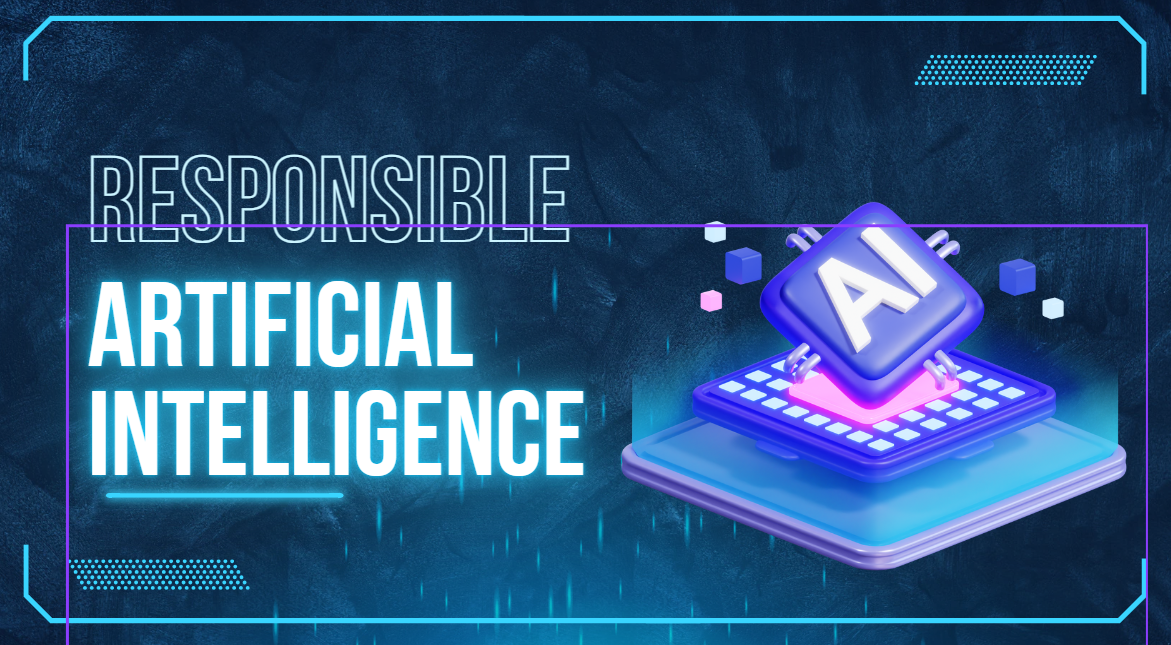Our everyday lives now revolve around artificial intelligence (AI), which has an impact on everything from healthcare to banking. But as its impact grows, the necessity of responsible AI has become critical. The creation and application of ethical, open, and accountable AI systems is referred to as “responsible AI.” Making sure AI systems follow these guidelines is essential in today’s technology environment to avoid negative impacts and foster trust. Fairness, transparency, accountability, privacy and security, inclusivity, dependability and safety, and ethical considerations are some of the fundamental tenets of Responsible AI that need to be explored.
1. Fairness
Making sure AI systems don’t reinforce or magnify prejudices is the goal of fairness in AI. skewed algorithms or skewed training data are just two examples of the many sources of bias in AI. Regular bias checks and the use of representative and diverse datasets are crucial for ensuring equity. Biases can be lessened with the use of strategies such adversarial debiasing, re-weighting, and re-sampling. One way to lessen bias in AI models is to use a broad dataset that covers a range of demographic groupings.
2. Transparency
Transparency in AI refers to the ability to comprehend and interpret AI systems. This is essential for guaranteeing accountability and fostering confidence. One approach to achieving transparency is Explainable AI (XAI), which focuses on developing human-interpretable models. Understanding model predictions can be aided by tools such as SHAP (SHapley Additive exPlanations) and LIME (Local Interpretable Model-agnostic Explanations). Furthermore, comprehensive details regarding the model’s creation, functionality, and constraints are provided by documentation practices like Model Cards.
3. Accountability
Holding people or organizations accountable for the results of AI systems is known as accountability in AI. Accountability requires the establishment of transparent governance frameworks as well as frequent audits and compliance checks. To monitor AI initiatives and make sure they follow ethical standards, for instance, organizations can establish AI ethics committees. Maintaining accountability also heavily depends on having clear documentation and reporting procedures.
4. Privacy and Security
AI security and privacy are major issues, particularly when handling sensitive data. Strong security measures like encryption and secure data storage must be put in place to guarantee user privacy and data protection. Additionally crucial are routine security audits and adherence to data protection laws like GDPR. Differential privacy is one technique that can help safeguard personal information while still enabling data analysis.
5. Inclusiveness
AI security and privacy are major issues, particularly when handling sensitive data. Strong security measures like encryption and secure data storage must be put in place to guarantee user privacy and data protection. Additionally crucial are routine security audits and adherence to data protection laws like GDPR. Differential privacy is one technique that can help safeguard personal information while still enabling data analysis.
6. Reliability and Safety
AI systems must be dependable and safe, particularly in vital applications like autonomous cars and healthcare. AI models must be rigorously tested and validated in order to ensure reliability. To avoid mishaps and malfunctions, safety procedures including fail-safe mechanisms and ongoing monitoring are crucial. AI-powered diagnostic tools in healthcare that go through rigorous testing before to deployment are examples of dependable and secure AI applications.
7. Ethical Considerations
The possible abuse of AI technology and its effects on society give rise to ethical quandaries in the field. Guidelines for ethical AI practices are provided by frameworks for ethical AI development, such as the IEEE Global Initiative on Ethics of Autonomous and Intelligent Systems. Taking into account how AI technologies will affect society and making sure they are applied for the greater good are key components of striking a balance between innovation and ethical responsibility.
8. Real-World Applications
There are several uses for responsible AI in a variety of sectors. AI in healthcare can help with disease diagnosis and treatment plan customization. AI can be used in finance to control risks and identify fraudulent activity. AI in education can help teachers and offer individualized learning experiences. But there are drawbacks to using Responsible AI as well, such protecting data privacy and dealing with biases.
9. Future of Responsible AI
New developments in technology and trends will influence responsible AI in the future. The ethical and legal environments are changing along with AI. Increased stakeholder collaboration, the creation of new ethical frameworks, and the incorporation of AI ethics into training and educational initiatives are some of the predictions for the future of responsible AI. Maintaining a commitment to responsible AI practices is crucial to building confidence and guaranteeing AI’s beneficial social effects.
Conclusion
To sum up, responsible AI is essential to the moral and open advancement of AI systems. We can guarantee AI technologies assist society while reducing negative impacts by upholding values including justice, accountability, openness, privacy and security, inclusivity, dependability and safety, and ethical concerns. It is crucial that those involved in AI development stick to these guidelines and never give up on ethical AI practices. Together, let’s build a future where AI is applied morally and sensibly.
We can create a more moral and reliable AI environment by using these ideas and procedures. For all parties participating in AI development, maintaining a commitment to Responsible AI is not only essential, but also a duty.
Contact us at innovate@quotients.com to schedule a consultation and explore the transformative potential of this innovative technology.







